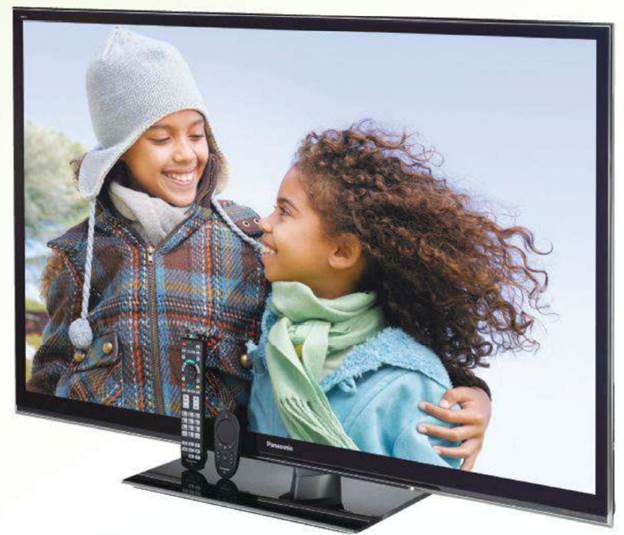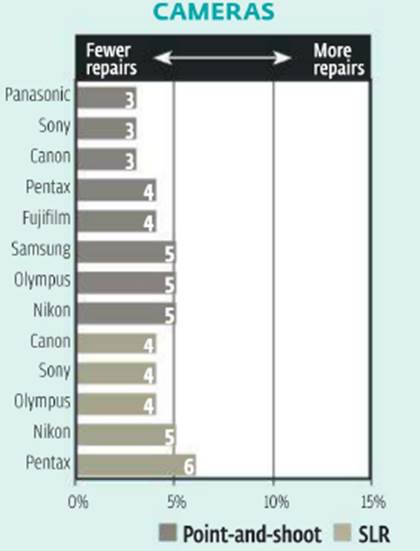Repair and performance histories can help
you choose a winner
We test hundreds of
electronics products every year, focusing on the brands and models you’re most
likely to buy. But nobody can test everything. So what happens if you’re considering
a TV, camera, computer, or printer that hasn’t gone through our labs? No
worries- we’ve got you covered.
Our new Brand Report
Card pulls together everything we know about the products in those categories
to give you guidance about models we haven’t’ tested. Brand level advice isn’t
as foolproof as model-specific Ratings, but it can minimize your chance of
buying a clunker and maximize the likelihood that you’ll take home a topnotch
product.
Keep in mind that our
repair data are historical and can’t predict future reliability, and changes in
manufacture can affect reliability. Still, picking a brand with a good track
record can reduce thte chance that you’ll run into problems.
LCD and plasma TVs

Consumers have spoken,
and they have encouraging words about TV reliability. According to their
reports on 200,000- plus TVs, most major brands have been reliable, with an
overall repair rate of just 4 percent during the first four years of use.
Westinghouse was the most repair-prone of the 16 LCD brands covered. (See chart
for more details)
When there were
problems, they most often occurred early-57 percent of reported repairs took
place during the first year of ownership, a period usually covered by the
standard manufacture warranty. That reinforces our advice that extended
warranties aren’t a good investment for most users. If you’re one of the
unfortunate few who have a problem, be prepared for a wait: 28 percent of users
who had a repair said it took three weeks or longer, reducing their
satisfaction.
The news about plasma
and LCD TV performance is mixed. A number of brands stand out as solid choices,
based on our tests over the past few years, but we’d urge some caution with
half a dozen makes that have had hits and misses in our Ratings.
Here are our
recommendations, based on our reliability data and Ratings history for these
brands over the past few years:
Safest bets
LCD TVs from LG,
Panasonic, Samsung, and Sony, as well as Panasonic plasma TVs, have consistently
been among the top performers in our Ratings over the past few years. Plasma
TVs from Samsung and LG have had consistently strong performance in our tests,
just a bit below the best. Given that top-notch track record, we believe other
TVs from those brands are likely to do just as well. Also reassuring: The TV
buyers we surveyed have reported a low rate of repairs for TVs from those
brands.

Plasma TVs from Samsung and LG have had
consistently strong performance in our tests, just a bit below the best.
Safe bets
Vizio, Sanyo, and
Sharp LCDs have delivered generally strong performance that should satisfy all
but the most demanding viewers. Their tack record suggests that other models
will follow suit. All of those brands have had a low rate of repairs.
Most and
least reliable

Westinghouse was the most repair-prone
of the 16 LCD brands covered
Based on the 2012
Annual Product Reliability Survey conducted by the Consumer Reports National
Research Center, for 180,806 LCD and 26,094 plasma TVs purchased new between
2008 and the first half of 2012. Differences of fewer than 3 percentage points
are not meaningful.
Stick with
a tested model
Other brands have a
less consistent track record in our Ratings. Some LCD TVs from Insignia, JVC,
Philips, and Toshiba did quite well, but others had lower scores. We have less
confidence that an untested model from one of those brands will offer performance
comparable to its best tested siblings. On the plus side, TVs from all of those
brands have had a low rate of repairs.
Magnavox and
Westinghouse LCDs had lower overall scores than most, suggesting that untested
sets from those brands are less likely to be high performers. Magnavox had a
low rate of repairs. With all of those brands, your best bet would be to look
for a TV we’ve tested.
Digital cameras

Shutterbugs, you can
breathe easy- digital cameras have a solid track record for reliability, according
to our surveys. Overall, only 4 percent were repaired or had a serious problem
during the first few years of use.
There was no
meaningful difference in reliability among brands covered in the survey. (See
chart). Among point-and-shoot users who reported repairs, the power-up function
was the problem 28 percent of the time; the lens and autofocus on SLRs and
SLR-likes were the trouble 17 percent of the time.
Performance varies
more, according to an analysis of three years of Ratings. Here’s our take on
two types of point and shoots:
Superzooms

If you’re thinking of
buying a superzoom that we haven’t tested, your safest bets are cameras from
Panasonic, Canon, and Sony. All three brands consistently did very well in our
tests, with no low-scoring models in our Ratings. Given that track record, we
believe other superzooms from those brands are likely to do just as well.
Close behind were
Nikon and Olympus superzooms, with a mix of high performers and models with
lower but still solid scores. In all likelihood, untested superzooms from those
two brands should do well.
Fujifilm and Samsung
superzooms showed more variation in performance, with some models doing very
well but others middling or below. A tested model would be your safest choice
for both brands.
Subcompacts
In general, few
subcompacts scored as highly as the top superzooms in our tests. As a result,
we can’t give you as much assurance that a model we haven’t tested will be a
winner. But we test most of the subcompacts on the market, so in many cases we
can give you model-specific advice.

If you are considering a subcompact we
haven’t tested, your safest bet is a Panasonic
If you are considering
a subcompact we haven’t tested, your safest bet is a Panasonic. Its subcompacts
have had the most consistent record of very good performance in our tests, so
there’s a good chance you’d be satisfied with one of tis cameras. Canon and
Nikon did almost as well, though they had a few lower-scoring models. On the
whole, it seems unlikely that you’d be disappointed with one of their
subcompacts.
Most and
least reliable

There was no meaningful difference in
reliability among brands covered in the survey
Based on the 2012
Annual Product Reliability Survey, conducted by the Consumer Reports National
Research Center, for 126,239 digital cameras purchased between 2008, and the
first half of 2012. Differences of less than 3 points aren’t meaningful. We’ve
adjusted the data to eliminate differences linked solely to the age of the
digital camera.